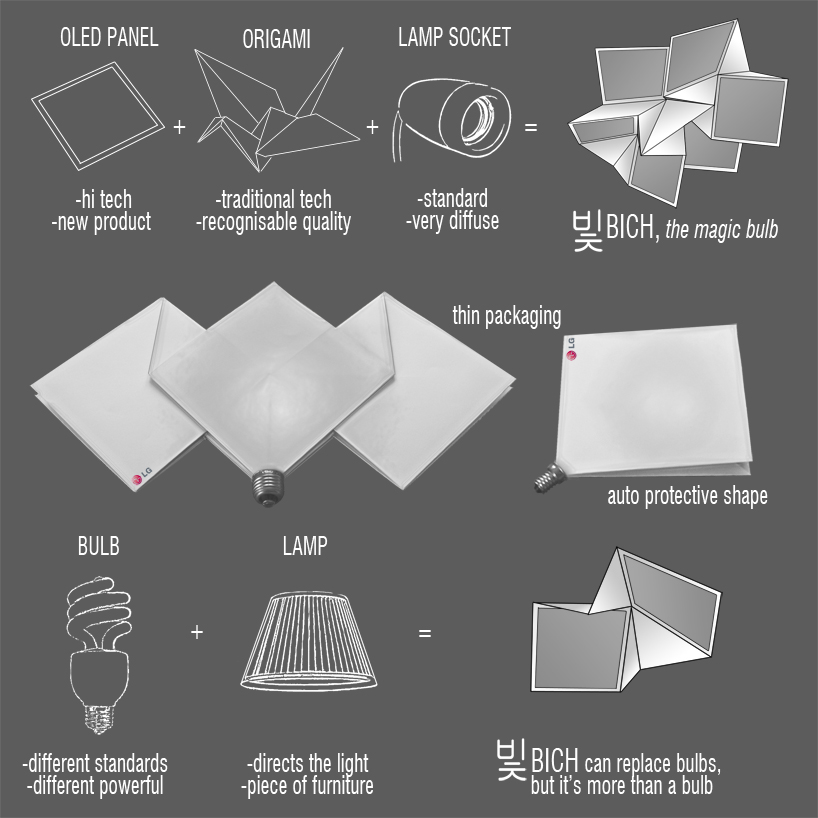
%eb%b9%9bbich by fabrizio tozzoli from italy
designer's own words:
The world is full of futile products, but OLEDs are the lighting sources of the future.
Instead of designing a new product, a futile new gadget or furniture object, we wanted to create an object which could replace others. The name BICH, the Korean word for light, was born from this concept: we wanted to design the light.
The world diffusion of lampsockets, screw fitting or bayonet fitting, is very wide and in the last years we have seen the creation of the first designed energy saving bulbs. It’s another step ahead of minimalist lighting design. Once bulbs were hidden behind a lamp, now they’re beginning to replce them.
We wanted to catch this trend and create a better product, not a simple bulb.
OLED panles are fabulous because they seem magical, they’re impressively thin and their light is wonderful. We looked for a support to make this concept.
The origami art, applied to OLEDs, allows us to create an objects where the merge between a high technology and a traditional technology, but full of meanings, makes BICH an almost magical object.
We used only 140mm standard OLED panels and we adapted the products to the 2 most used standards, E14 and E27 with 2 different power levels: 2 OLED panels for approximately 400 lumens (E14) and 6 OLED panels for approximately 1200 lumens (E27).
For its nature BICH could be used in all lighting devices: suspended, as table lamp or portable lamp.
The particular shape of BICH , relating to real size, allows a very reduced packaging, very thin and auto-protective for the panels.
Tyvek type 10 allows to have great heat and tear resistance performances, it’s waterproof and easy to clean, but it’s stiff enough to look like paper. Between the two Tyvek layers, heat welded or hand sewn around the panels, it’s placed a copper frame wich allow the parts to bend and mantain the position.
In this way it’s possible to orient the light where you want, or to reduce the lighting power simply closing the bright origami. Obviously using hands...
concept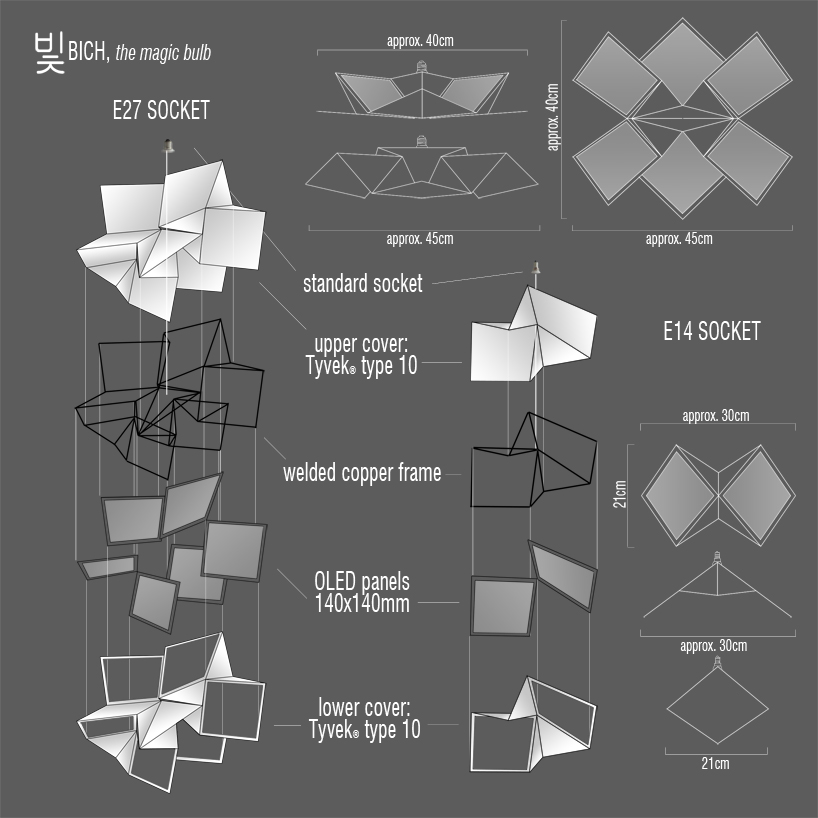 design specifications
design specifications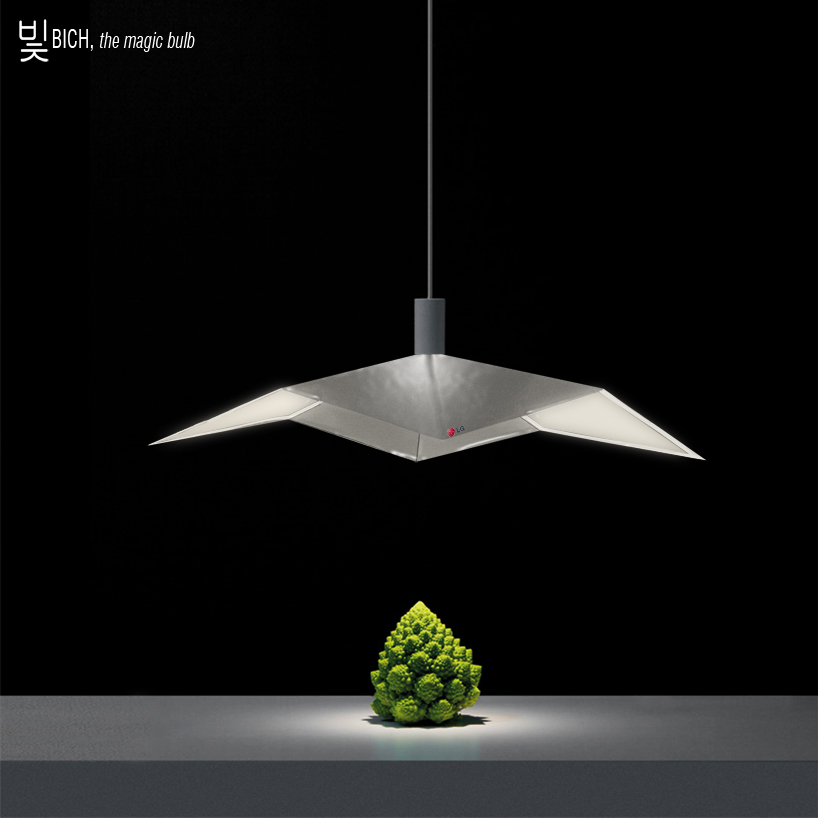 E14 socket
E14 socket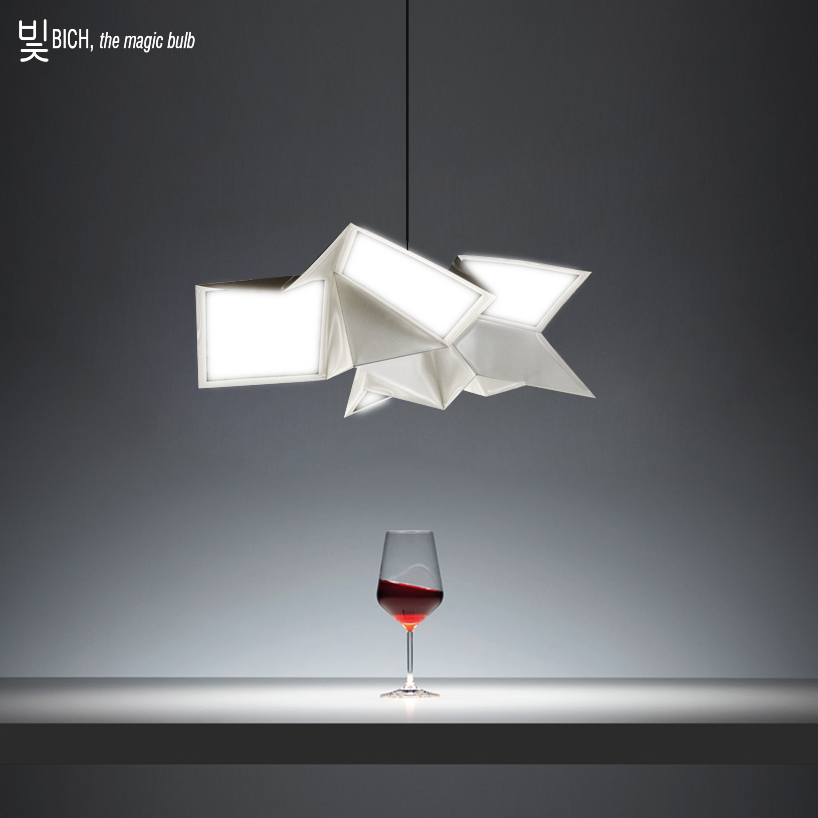 E27 socket
E27 socket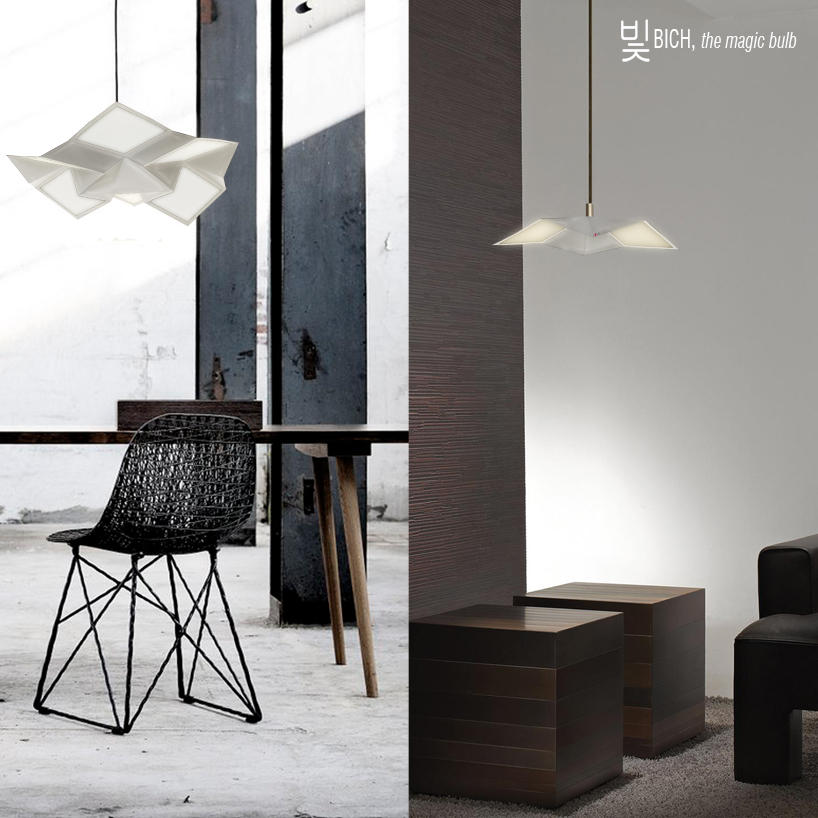 examples
examples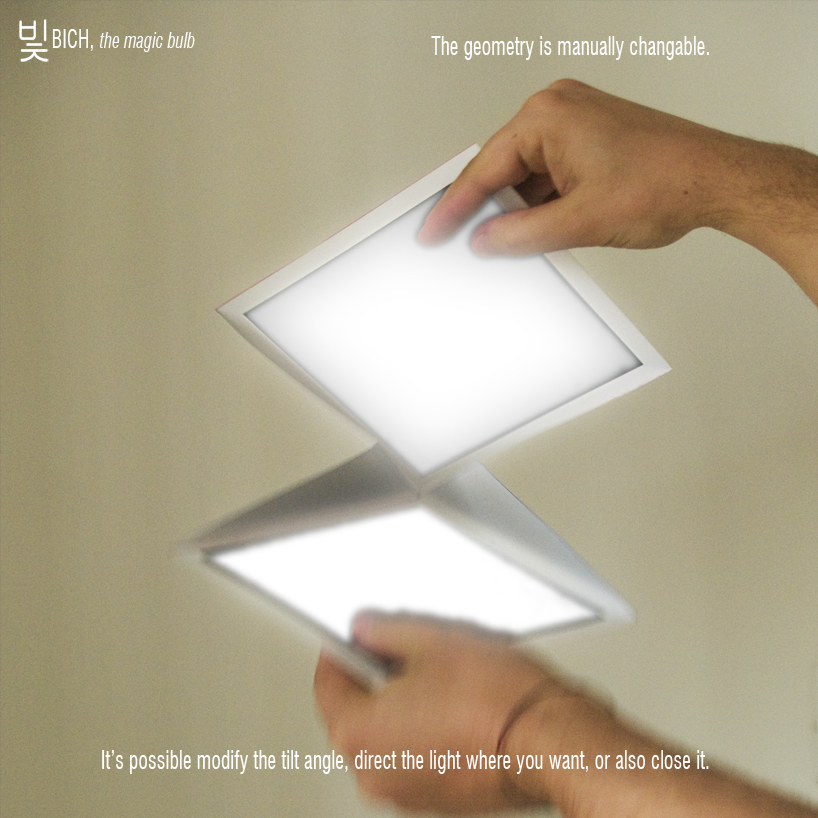 human interaction
human interaction